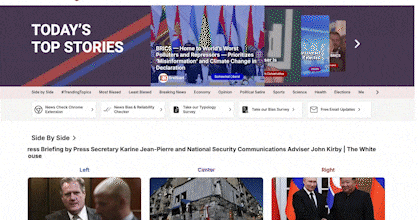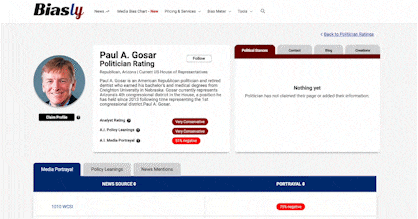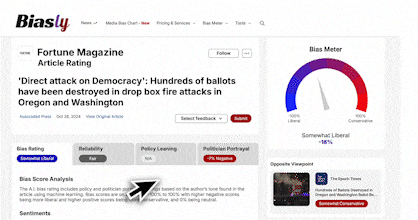
The Jewish Journal of Greater Los Angeles is a prominent publication covering news, events, and cultural topics pertinent to the Jewish community locally and internationally. Established in 1985, it has grown into one of the most influential Jewish publications in the United States. By consistently providing in-depth articles, opinion pieces, and community updates, the Jewish Journal offers a platform for discourse and connection, serving as a vital link for the diverse Jewish community in Los Angeles and beyond.
Over the years, the Jewish Journal has transitioned from a primarily print-focused medium to a digital platform, extending its reach to a global audience. Its commitment to journalistic excellence has garnered it a reputation for balanced reporting and insightful commentary. As a result, the outlet remains a trusted news source, offering a unique perspective on contemporary issues and serving as a voice for the Jewish community in Southern California.
The Jewish Journal, with its conservative inclination, is likely to resonate most with Orthodox Jews. According to the Pew Research Center, approximately 75% of Orthodox Jews identify as Republican, setting them apart from other Jewish subgroups that predominantly lean Democratic:
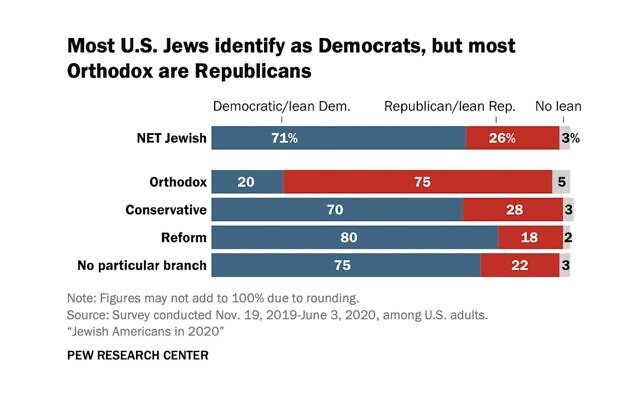
Source: Pew Research Center
This article will examine the Jewish Journal’s coverage and editorial choices to determine whether its reporting has a noticeable political slant. Through our investigation, we aim to offer a thorough understanding of the elements that contribute to media bias overall.
How Does Biasly Rate News Sources?
Biasly’s algorithms produce bias ratings to help provide multiple perspectives on given articles. Biasly has analyzed 200,000+ news articles from more than 3,200 news sources through our A.I. technology and team of political analysts to find the most factual, unbiased news stories.
Biasly determines the degree of political bias in news sources by using Biasly’s Bias Meter Rating, in which Biasly’s team analyzes media sources’ reliability and bias and produces three scores, a Reliability Score that measures the accuracy of media sources; an A.I. Bias Score, evaluated by A.I.; and an Analyst Bias Score evaluated by political analysts. These scores are rated based on seven rating metrics including Tone, Tendency, Diction, Author Check, Selection/Omission, Expediency Bias, and Accuracy. These metrics help our analysts to determine the political attitude of the article.
Our A.I. machine-learning system employs natural language processing and entity-specific sentiment analysis to examine individual articles and determine their bias levels. By analyzing the key terms in an article such as policies, bias phrases, political terminologies, politicians, and their nicknames, the algorithms can rate the attitude of the text. Bias scores range from -100% and 100%, with higher negative scores being more liberal and higher positive scores being more conservative, and 0% being neutral.
Is the Jewish Journal Politically Biased?
The question of media bias is complex and often subjective, and the Jewish Journal is no exception. Like all publications, the Jewish Journal has editorial policies, decisions, and perspectives that can influence its content.
However, perceptions of bias often arise because readers approach content with their own beliefs and expectations. A publication serving a specific community might have a different focus or lens than a general newspaper. For a truly comprehensive assessment, one would need to systematically analyze the Jewish Journal’s articles, opinion pieces, and editorials over a significant period.
We determined our rating for the Jewish Journal based on two scores: one from computer algorithms, which rely on A.I., and one from a team of human Analysts. With this in mind, our Bias Meter rated the Jewish Journal with a Somewhat Conservative Computer and Analyst score. Biasly’s methodology mandates that ratings derive from an average across a minimum of 15 articles. Three analysts must evaluate each article, each representing a different political perspective: liberal, moderate, and conservative. The more articles Biasly’s analyst team rates, the more accurate the scores will become. Praise for conservative politicians and policies and dislike toward Democratic policies and politicians, or vice-versa, contribute to this rating.
Readers with distinct political leanings often have pronounced opinions about the Jewish Journal. As evidenced by Biasly’s “Somewhat Conservative” rating, the publication appears to lean towards right-wing causes and individuals. In the ensuing sections of this article, we will delve into methods to discern this bias, enabling one to distinguish between opinion and fact, ultimately fostering a more discerning news consumption experience.
Before we begin, we need to discuss bias. Bias is a natural function of humans, and we can express it both consciously and unconsciously. Bias is one of the most fundamental forms of pattern recognition in humans. This isn’t to lower the bar and say that “all things are biased,” but to explain the process in which we may come to trust certain news organizations that display patterns of coverage.
On the media’s part, there is an incentive to retain audiences, encourage them to purchase subscriptions, and rate products positively. Bias is a two-way street, people want to see news stories about things they care about, and the media needs viewers to continue their operations. This creates a positive feedback loop that influences what stories are covered and from what perspective. This also explains the actions of more liberal news organizations.
Analysis of Bias in Jewish Journal Online Articles
The most common metrics used when determining bias include tone, author, diction, tendency, and expediency bias. Tone refers to the attitude of the writing and is related to but distinct from diction, which is the writer’s word choices. The Author metric refers to the author of the article and their demonstrated stance on issues through past articles and social media posts.
Moreover, tendency measures the consistency of an author’s tone or bias. A Center or neutral tendency indicates a balanced approach with no consistent bias. ‘Somewhat Liberal/Conservative’ shows slight, occasional bias, though the author generally tries to remain neutral. A ‘Very Liberal/Conservative’ tendency means the author often, but not always, leans towards a particular viewpoint. In an ‘Extremely Liberal/Conservative’ scenario, the bias is evident throughout the article, favoring one side exclusively.
Finally, expediency bias relates to the initial impression from an article’s headline, images, or summary. A Center or neutral expediency bias presents information fairly without delay or misleading elements. ‘Somewhat Liberal/Conservative’ indicates slight favoritism in headlines and images. ‘Very Liberal/Conservative’ expediency bias shows apparent favoritism for one viewpoint in the headline and pictures. Lastly, ‘Extremely Liberal/Conservative’ expediency bias is when headlines and images blatantly favor one side, often resembling clickbait.
The first article we will examine is “Iran Removed from UN Women’s Commission,” by Aaron Bandler. The tone of the article and accompanying social media posts is decidedly supportive of the UN’s decision to remove Iran from the UN Women’s Commission. This approach is particularly evident in the direct quote from Iranian journalist Masih Alinejad, who characterizes the vote as “a victory for Iranian revolutionaries who have been facing guns & bullets as they fight this gender apartheid state.” Such language conveys a positive spin on the UN’s decision, and the term “gender apartheid state” is a robust and value-laden descriptor that indicates a very critical view of Iran’s treatment of women.
The tendency of the piece is consistent, with multiple entities and individuals expressing alignment with the decision. The Anti-Defamation League’s tweet, stating that “the brutal treatment of women will not be tolerated,” and the American Jewish Committee’s remark that the removal “corrects a grave mistake,” maintain a uniform narrative that Iran’s presence on the Commission was undeserved and its expulsion warranted.
We welcome the vote to expel Iran from the UN’s Committee on the Status of Women, a decision that sends a message to the Iranian regime that its brutal treatment of women will not be tolerated. Other international orgs should take notice and take action. https://t.co/cD4agzdiM9
— ADL (@ADL) December 14, 2022
We applaud the 29 members of the UN’s ECOSOC who declared today that they will no longer allow Iran, a country that relentlessly persecutes women and girls, to serve as a member of the Commission on the Status of Women.
Its removal from the @UN_CSW corrects a grave mistake. pic.twitter.com/lE1HBDX8Qr
— American Jewish Committee (@AJCGlobal) December 14, 2022
The diction throughout indicates a firm stance against Iran’s human rights record. Phrases such as “brutal treatment of women,” “child-killing, women-torturing regime,” and “persecutes women and girls” are powerful and evoke a strong emotional response. They are far from neutral descriptors, showing a critical view of Iran’s policies and actions.
The article’s expediency bias is evident from the outset. The headline “Iran Removed from UN Women’s Commission” is straightforward. Nonetheless, the image chosen to accompany it—a woman in a veil with the Iranian flag—alongside the tone of the tweets and statements included reinforces a particular perspective immediately. The tweets from various organizations and individuals quickly establish a narrative of rectifying an injustice, which could be seen as clickbait, enticing readers to engage with the content based on moral or emotional grounds.
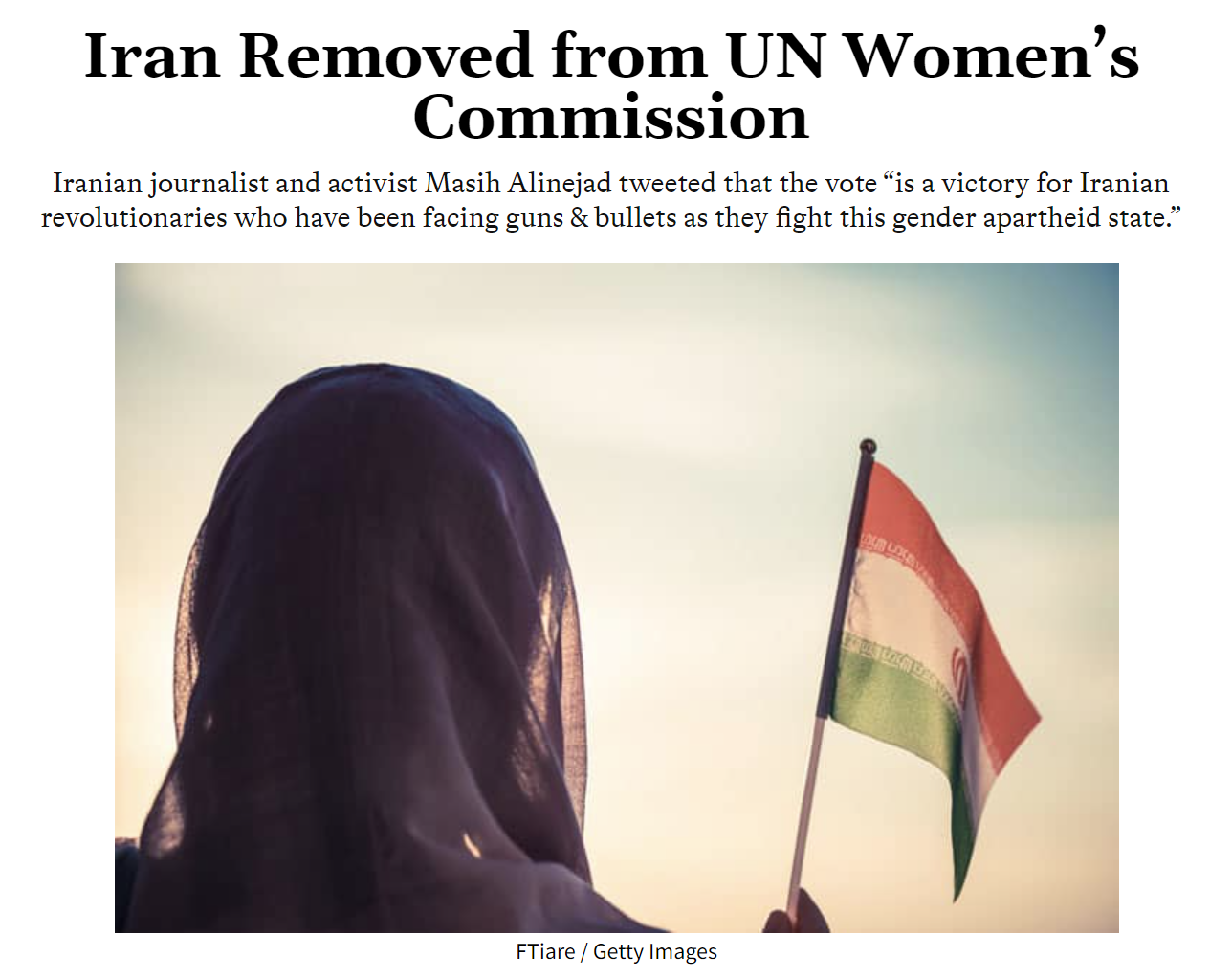
Source: jewishjournal.com
The author in question, Aaron Bandler, presents a clear perspective on his Twitter profile, which aligns strongly with pro-Israel and Zionist sentiments while demonstrating a critical stance towards Palestine. His social media activity reflects a distinct narrative; he frequently shares content that portrays organizations like Hamas and individuals who unfavorably protest against Zionism. This consistent portrayal suggests a specific viewpoint likely to influence the tone and content of his published work. This approach to social media communication can provide insights into the author’s potential biases and the lens through which he views the complex geopolitical landscape of the Israeli-Palestinian conflict.
🚨 VIDEO OF PRO-PALESTINIAN PROTESTERS DEFACING U.S. MILITARY CEMETERY
85,000 American soldiers from 19th, 20th, and 21st century wars are buried at Los Angeles National Cemetery.
Reminder: the pro-Israel side loves America pic.twitter.com/ZFWUgzXIab
— Sia Kordestani (@SiaKordestani) January 7, 2024
Recently, @omarsuleiman504 spouted a recycled anti-Zionist trope that “Zionism is racism,” as the UN once contended with the passing of GA Resolution 3379 in 1975. Suleiman claims that “Zionism requires the erasure of Islam and Muslims.”
Is there any truth to these charges?… pic.twitter.com/pRL59tSFWi
— Israel B. Bitton (@IsraelBitton) January 8, 2024
🚨 VIDEO OF PRO-PALESTINIAN PROTESTERS DEFACING U.S. MILITARY CEMETERY
85,000 American soldiers from 19th, 20th, and 21st century wars are buried at Los Angeles National Cemetery.
Reminder: the pro-Israel side loves America pic.twitter.com/ZFWUgzXIab
— Sia Kordestani (@SiaKordestani) January 7, 2024
Moving forward, Bandler published another article that Biasly rated Somewhat Conservative with Excellent Reliability, titled “CUNY Student Senate to Vote on Resolution Rejecting IHRA.” The piece describes how the City University of New York’s (CUNY) Student Senate will vote on a resolution contesting the International Holocaust Remembrance Alliance (IHRA) definition of antisemitism. The initiative opposes a March resolution that endorsed the IHRA’s stance. The resolution’s supporters argue it mislabels pro-Palestinian advocacy as inherently anti-Semitic, curtailing free dialogue on campuses:
“The equation of speech and activity opposing Israel and Zionism, and/or supporting Palestinians, as inherently antisemitic is a form of anti-Palestinian racism… antisemitism is not an exceptional form of bigotry. People and systems that hate, discriminate and/or attack Jews, have also upheld structural racism, patriarchy, and white supremacy.”
In contrast, groups like StandWithUs condemn this new direction, highlighting that most Jews interpret denying Israel’s statehood as anti-Semitic:
“The reality is that the vast majority of Jews believe denying Israel’s right to exist is antisemitic. No amount of misinformation or disingenuous claims about the IHRA definition will change that. We stand with Jewish students as they stand up for their community and we call on CUNY USS to do the right thing and uphold the IHRA definition.”
Biasly’s Excellent Reliability score indicates that the article is factually accurate, well-sourced, and avoids disseminating misinformation.
Analysis of Jewish Journal Opinion Articles
The Jewish Journal has both regular reporting and opinion articles on its website. The former aims for neutrality, only providing readers with facts and direct quotes from primary sources to shape their perspectives. In contrast, the latter are platforms for columnists to articulate their stances on contemporary issues rather than pursuing strict objectivity.
Consider the opinion article from the Jewish Journal titled “The Weaponization of Zionism and the IHRA Definition.” The selected article argues that individuals and groups who perpetrate antisemitic language, such as the authors of the initial draft of California’s Ethnic Studies Model Curriculum, should not be the ones defining antisemitism. The article contextualizes this assertion by referencing historical instances from the Middle East and North Africa where the term “Zionism” was ambiguously defined by several countries. This vague definition allegedly led to a rise in state-sponsored antisemitism, resulting in widespread violations of Jewish rights across the region.
The article further outlines the tangible consequences of this campaign against Jews, highlighting how it transcended institutional measures and permeated public spaces. It discusses various forms of discrimination faced by Jews, from violent outbursts to subtler forms of prejudice, with a specific focus on the challenges faced by Jewish students. By citing the example of a Libyan law stipulating “any person deemed to have acted morally or materially in favor of Israeli interests,” the article offers concrete evidence of the wide-reaching implications of such policies, emphasizing the disconnect between the distant geopolitical conflict and the local repercussions Jewish communities face.
Furthermore, the opinion piece titled “All We Are Saying is Give War a Chance” is a provocative argument advocating for war as sometimes the only viable solution, particularly in the context of Israel’s conflicts. The title, likely referencing John Lennon’s Vietnam protest song “Give Peace a Chance,” seeks to challenge the anti-war sentiment by suggesting the opposite. The article employs emotional imagery, historical references, and religious justifications to underscore its stance, while its clear bias and repetitive affirmations further solidify its viewpoint. Although rooted in opinion rather than objective reporting, the piece uses a combination of emotional appeal and historical evidence to persuade its readers.
Who Owns the Jewish Journal?
The Jewish Journal faced financial challenges in 2009, similar to numerous other newspapers and magazines. The management made drastic moves to navigate the economic pressures: they reduced staff and cut salaries by 20%. Despite these measures, there were concerns about the publication’s longevity and ability to celebrate its 25th anniversary. However, adopting two modern media growth strategies — niche journalism and philanthropy — seems to have granted the Jewish Journal a lifeline, extending its coverage of Jewish life in Southern California.
The Journal secured an $800,000 donation from four philanthropists, including Westfield Mall CEO Peter Lowy and Internet executive Art Bilger. These funds are expected to solidify its foundation and allow for growth. Lowy envisions advertising covering most future expenses, supplemented by continued fundraising.
Initially functioning under the Jewish Federation of Greater Los Angeles, the Jewish Journal has changed dramatically since 2005. The publication has taken a more vibrant editorial direction under the stewardship of Rob Eshman, its editor-in-chief since the early 2000s. Eshman’s leadership has ushered in diverse voices, from conservative radio host Dennis Prager to liberal academic David Myers. This diversity reflects the Journal’s commitment to comprehensive reporting on matters significant to the Jewish community.
However, the Journal has occasionally faced criticism for not adequately representing all viewpoints, as illustrated by an article on tensions between Muslim and Jewish students at UC Irvine. The coverage seemed to mute the Muslim perspective somewhat. Such instances highlight the challenges faced by community newspapers striving for journalistic excellence while catering to a specific audience.
Despite past challenges, the Journal has shown resilience and adaptability. Under Eshman’s direction, it rebounded from a circulation dip, expanded its online presence, and launched a monthly magazine, Tribe. With an average household income reportedly exceeding $260,000, the Journal’s affluent readership has attracted a broader advertiser base. As they continue to evolve, their ability to monetize their growing online audience will be critical in establishing a sustainable model for niche journalism in the modern era.
David Suissa, the Publisher, President, and Editor-in-Chief of the Jewish Journal, is a prominent figure in the Los Angeles Jewish community. Before delving into journalism, he founded Suissa Miller, a branding and advertising agency. In addition to his leadership roles, Suissa is a respected writer, contributing columns to the Jewish Journal on various topics encompassing Jewish life, Israel, and broader global issues, often presenting unique and challenging perspectives.
According to Jewishjournal.com, Suissa has penned a weekly column on Jewish topics since 2006. In 2015, the American Jewish Press Association recognized him for his outstanding work with the “Editorial Excellence” award. Additionally, USA Today celebrated Suissa Miller Advertising as “Agency of the Year.”
How to Evaluate and Uncover Bias
It can often be difficult to tell if the news you watch is biased. If you have settled on a news channel, it’s usually because you trust the information you are gaining. Unfortunately, many trust the information they are hearing because it confirms what they already believe. This is referred to as “confirmation bias.” It is important to challenge your beliefs and get third-party verification that what you are hearing is the full story. This is why we recommend using Biasly to compare different news stories side-by-side using our bias ratings to figure out what both sides think of a political issue.
The Jewish Journal of Greater Los Angeles, under the leadership of David Suissa, stands as a distinguished publication exploring Jewish themes and global events. However, as we mentioned, Biasly rated this outlet as having a “Somewhat Conservative” bias. Therefore, it is essential to recognize that all articles possess some subjectivity. To discern this, tools like Biasly’s News Check are invaluable in gauging potential biases in political reading material.






















